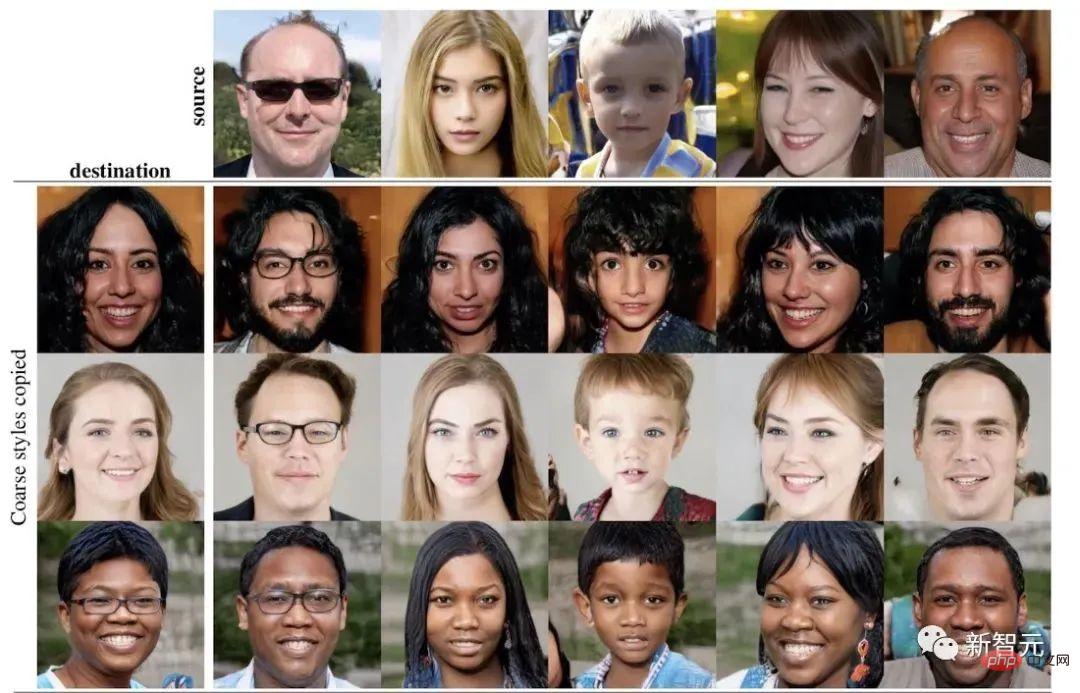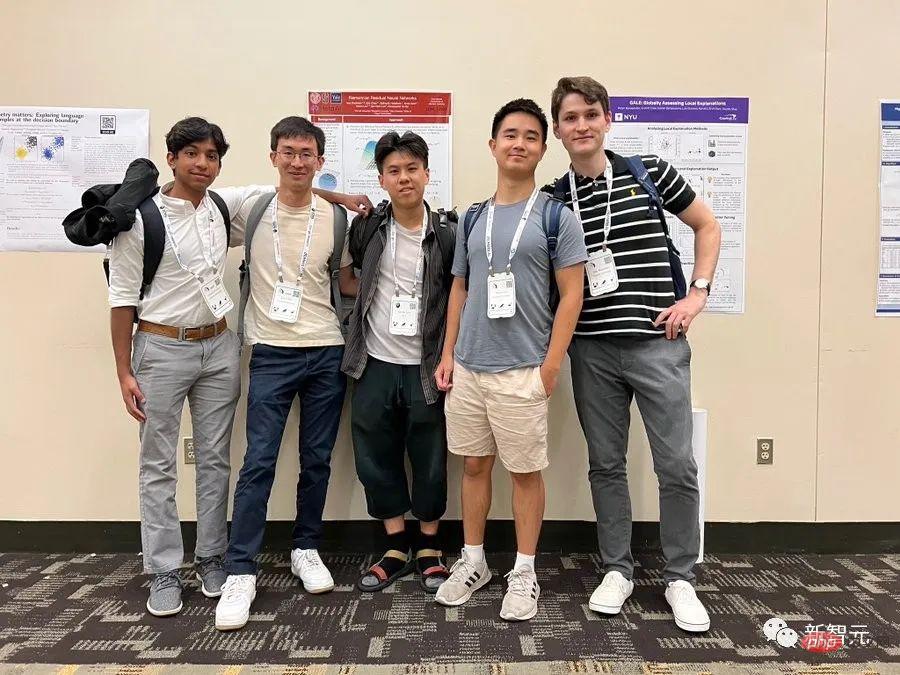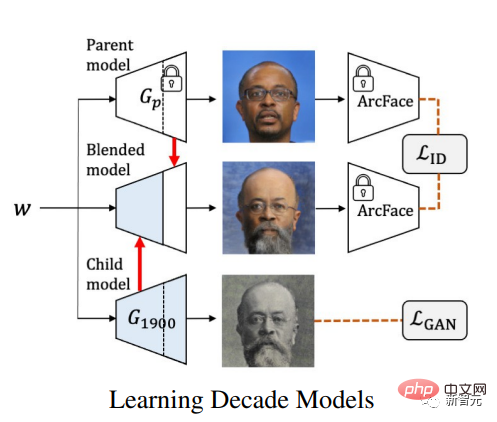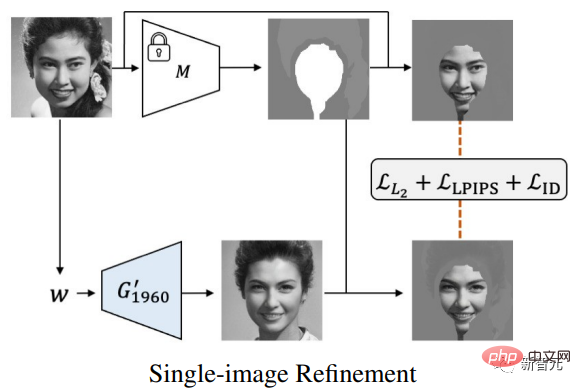 Technology peripherals
Technology peripherals
 AI
AI
 Can photos travel through time? 'Faces traveling through time' new model turns into an AI time machine
Can photos travel through time? 'Faces traveling through time' new model turns into an AI time machine
Can photos travel through time? 'Faces traveling through time' new model turns into an AI time machine
At present, artificial intelligence and deep learning technology are becoming an important foundation for text-image generation, super-resolution and other applications.
Now one can enter a high-detail description of an image, resulting in a photorealistic image corresponding to the given text.

You can also convert an image from low resolution to high resolution to generate a series of vivid details for the picture.

Neural networks seem to have endless capabilities. So, can these methods be used for time travel?
For example, have you ever wondered what a picture of yourself would look like if it were taken fifty or a hundred years ago? What would your favorite actor or actress be like if they were born in a completely different era than them?

Time Travel Step One: Solve the Dataset Problem
In view of the recent success of StyleGAN in high-quality face synthesis and editing Successfully, many works have focused on using pre-trained StyleGAN models for portrait editing.
However, existing techniques usually deal with well-defined semantic properties. For example, add or remove a smile or change the age of a person in a picture.

The logic behind this work is to keep these attributes that make up a person's identity intact, and at the same time, use this artificial intelligence carriage to send them back in time or Go to the future.
In this case, the main problem people face is the lack of suitable data sets. As we all know, even with a perfect neural network model, data sets are still a nightmare for every artificial intelligence researcher.
Imbalanced, insufficient, or unavailable data are common problems in the field of deep learning, which can lead to data bias or inaccurate results.
In order to overcome this problem, a research team led by Eric Ming Chen (2nd from left), a Chinese scientist from Cornell University, created the FTT (Face Through Time) data set.

Chen co-published a publication with Chinese scientist Jin Sun from the University of Georgia and others, explaining in detail the working principle of the "Face Through Time" data set.

The images in this dataset come from Wikimedia Commons. The platform features fifty million images that are crowdsourced and open-licensed. FTT analyzed 26,247 portraits from the 19th to 21st centuries, averaging about 1,900 images per decade.

GANs parent-child hierarchical structure, transformed into an AI "time machine"
How are these changes realized?
The research team relied on the StyleGAN (Generative Adversarial Network) parent-child hierarchy. What's special is that they did not choose to train a single model covering all decades, but instead added a sub-model for each decade of image sets, training the model set to better synthesize the data distribution of each period.
At the same time, in order to preserve the identity and posture of the person being described, the research team uses a parent model to map this information into latent space vectors.
First, train a StyleGAN model set, one for each era, and use adversarial loss and identity loss to train a mixed face image. This face map is the output of the child model and has been modified so that the blended map has similar colors to the parent model.

The research team suggests that during this process, it is necessary to avoid errors caused by feature calculations in ArcFace, a popular facial recognition model. The inconsistency of identity loss. Because the ArcFace model was only trained on modern images, the researchers found that it performed poorly on historical images.
After that, each real image is projected onto a vector w on the decade manifold (1960 in the figure below). On this vector, the generator G′t is trained to transfer refined details to all sub-models. Finally, a mask is applied to the input image to encourage the model to preserve the facial details of the portrait.

After fine-tuning all sub-models, the research team found that FTT’s sub-models of different eras (orange in the picture below) successfully captured the changes in hairstyle and makeup while Portrait features of each image into the parent model (blue below).

This new synthetic image framework has two major highlights: first, it makes the wish of portraits traveling through time come true; second, when transforming human faces through time, The technology also preserves most of the details in portraits.
Although it still has minor biases in the dataset (for example, several women with short hair appear in images from the early 20th century), leading to inconsistencies in the output images, this model performs better than previous work Great improvements in authenticity.
"The Face Traveling Through Time" begins the first step of time travel. Such a high degree of accuracy makes people wonder: This time it is portraits that transcend time, but what about next time?
Reference:
https://www.marktechpost.com/2022/11/09/latest-artificial-intelligence-ai-research-proposes-a-method-to-transform -faces-through-time/
https://facesthroughtime.github.io/
The above is the detailed content of Can photos travel through time? 'Faces traveling through time' new model turns into an AI time machine. For more information, please follow other related articles on the PHP Chinese website!

Hot AI Tools

Undresser.AI Undress
AI-powered app for creating realistic nude photos

AI Clothes Remover
Online AI tool for removing clothes from photos.

Undress AI Tool
Undress images for free

Clothoff.io
AI clothes remover

Video Face Swap
Swap faces in any video effortlessly with our completely free AI face swap tool!

Hot Article

Hot Tools

Notepad++7.3.1
Easy-to-use and free code editor

SublimeText3 Chinese version
Chinese version, very easy to use

Zend Studio 13.0.1
Powerful PHP integrated development environment

Dreamweaver CS6
Visual web development tools

SublimeText3 Mac version
God-level code editing software (SublimeText3)

Hot Topics
 1673
1673
 14
14
 1428
1428
 52
52
 1333
1333
 25
25
 1277
1277
 29
29
 1257
1257
 24
24
 Top 10 digital currency trading platforms: Top 10 safe and reliable digital currency exchanges
Apr 30, 2025 pm 04:30 PM
Top 10 digital currency trading platforms: Top 10 safe and reliable digital currency exchanges
Apr 30, 2025 pm 04:30 PM
The top 10 digital virtual currency trading platforms are: 1. Binance, 2. OKX, 3. Coinbase, 4. Kraken, 5. Huobi Global, 6. Bitfinex, 7. KuCoin, 8. Gemini, 9. Bitstamp, 10. Bittrex. These platforms all provide high security and a variety of trading options, suitable for different user needs.
 Quantitative Exchange Ranking 2025 Top 10 Recommendations for Digital Currency Quantitative Trading APPs
Apr 30, 2025 pm 07:24 PM
Quantitative Exchange Ranking 2025 Top 10 Recommendations for Digital Currency Quantitative Trading APPs
Apr 30, 2025 pm 07:24 PM
The built-in quantization tools on the exchange include: 1. Binance: Provides Binance Futures quantitative module, low handling fees, and supports AI-assisted transactions. 2. OKX (Ouyi): Supports multi-account management and intelligent order routing, and provides institutional-level risk control. The independent quantitative strategy platforms include: 3. 3Commas: drag-and-drop strategy generator, suitable for multi-platform hedging arbitrage. 4. Quadency: Professional-level algorithm strategy library, supporting customized risk thresholds. 5. Pionex: Built-in 16 preset strategy, low transaction fee. Vertical domain tools include: 6. Cryptohopper: cloud-based quantitative platform, supporting 150 technical indicators. 7. Bitsgap:
 Easeprotocol.com directly implements ISO 20022 message standard as a blockchain smart contract
Apr 30, 2025 pm 05:06 PM
Easeprotocol.com directly implements ISO 20022 message standard as a blockchain smart contract
Apr 30, 2025 pm 05:06 PM
This groundbreaking development will enable financial institutions to leverage the globally recognized ISO20022 standard to automate banking processes across different blockchain ecosystems. The Ease protocol is an enterprise-level blockchain platform designed to promote widespread adoption through easy-to-use methods. It announced today that it has successfully integrated the ISO20022 messaging standard and directly incorporated it into blockchain smart contracts. This development will enable financial institutions to easily automate banking processes in different blockchain ecosystems using the globally recognized ISO20022 standard, which is replacing the Swift messaging system. These features will be tried soon on "EaseTestnet". EaseProtocolArchitectDou
 Is there a future for digital currency apps? Apple mobile digital currency trading platform app download TOP10
Apr 30, 2025 pm 07:00 PM
Is there a future for digital currency apps? Apple mobile digital currency trading platform app download TOP10
Apr 30, 2025 pm 07:00 PM
The prospects of digital currency apps are broad, which are specifically reflected in: 1. Technology innovation-driven function upgrades, improving user experience through the integration of DeFi and NFT and AI and big data applications; 2. Regulatory compliance trends, global framework improvements and stricter requirements for AML and KYC; 3. Function diversification and service expansion, integrating lending, financial management and other services and optimizing user experience; 4. User base and global expansion, and the user scale is expected to exceed 1 billion in 2025.
 Failed crypto exchange FTX takes legal action against specific issuers in latest attempt
Apr 30, 2025 pm 05:24 PM
Failed crypto exchange FTX takes legal action against specific issuers in latest attempt
Apr 30, 2025 pm 05:24 PM
In its latest attempt, the resolved crypto exchange FTX has taken legal action to recover debts and pay back customers. In the latest efforts to recover debts and repay clients, the resolved crypto exchange FTX has filed legal action against specific issuers. FTX Trading and FTX Recovery Trust have filed lawsuits against certain token issuers who failed to fulfill their agreement to remit agreed coins to the exchange. Specifically, the restructuring team sued NFTStars Limited and Orosemi Inc. on Monday over compliance issues. FTX is suing the token issuer to recover the expired coins. FTX was once one of the most outstanding cryptocurrency trading platforms in the United States. The bank reported in November 2022 that its founder Sam
 What are the three giants in the currency circle? Top 10 Recommended Virtual Currency Main Exchange APPs
Apr 30, 2025 pm 06:27 PM
What are the three giants in the currency circle? Top 10 Recommended Virtual Currency Main Exchange APPs
Apr 30, 2025 pm 06:27 PM
In the currency circle, the so-called Big Three usually refers to the three most influential and widely used cryptocurrencies. These cryptocurrencies have a significant role in the market and have performed well in terms of transaction volume and market capitalization. At the same time, the mainstream virtual currency exchange APP is also an important tool for investors and traders to conduct cryptocurrency trading. This article will introduce in detail the three giants in the currency circle and the top ten mainstream virtual currency exchange APPs recommended.
 What are the reliable exchange platforms? The top ten digital currency exchanges
Apr 30, 2025 pm 04:15 PM
What are the reliable exchange platforms? The top ten digital currency exchanges
Apr 30, 2025 pm 04:15 PM
The top ten digital currency exchanges are: 1. Binance, 2. OKX, 3. Coinbase, 4. Kraken, 5. Huobi Global, 6. Bitfinex, 7. KuCoin, 8. Gemini, 9. Bitstamp, 10. Bittrex. These platforms all offer high security and a variety of trading options, suitable for different user needs.
 Top 10 cryptocurrency platforms in the world that support multi-chain transactions are authoritatively released in 2025
May 08, 2025 pm 07:15 PM
Top 10 cryptocurrency platforms in the world that support multi-chain transactions are authoritatively released in 2025
May 08, 2025 pm 07:15 PM
According to the latest evaluations and industry trends from authoritative institutions in 2025, the following are the top ten cryptocurrency platforms in the world that support multi-chain transactions, combining transaction volume, technological innovation, compliance and user reputation comprehensive analysis:



